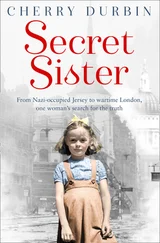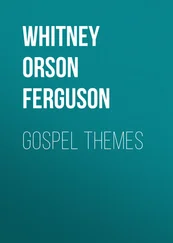for it and ear for it, rather both
eyes and ears for it and my own, as
we’re not opining that we’ll stay
these beasts,
I suddenly felt myself among those beasts, there in that unencumbered logic of dreams, years back at the Best Western in Savannah, Georgia, where I hid away for a long time and spent my nights and days listening to La Monte Young recordings and an audio file of Alice Notley reading “At Night the States” on repeat. In Savannah, I watched a lot of Gordon Ramsay, too. I thought about this gilded cult to which he belonged: the hovering system that coordinates the sexless angels whose lack of an anus indicates they don’t eat, yet the presence of mouths, which I suppose are their right only as enunciation, all made of light anyway so what does it matter, suggests we might put a hamburger there and see what happens. I’m betting I’ll make their heaven my home, some gold-leafed atopia linked by tramway back down to earth, below us the size of a blue M&M lost in black cloth. Do Tamagotchi angels have stomachs? I asked my Tamagotchi angel. I put my hand on my own to feel the movement within and confirm that I was still alive.
At the Best Western, the same where Paula Deen ran her first restaurant, The Bag Lady, I spent my afternoons sitting in a dark room, watching the TV glow with Food Network personalities at the center of the room. The living faces of America’s top chefs smiled, hovered there, and I searched their expressions for signs of my own coming transcendence, for reconciliation with this tearful world. It was like going to church. The smell of Paula’s fried chicken, then unknown to the rest of the country, wafted up from the kitchen below, and I often went to bed dizzy with hunger, the TV humming in the background.
There’s a moment in the Oprah special on Paula Deen where Paula and her sons discuss the restorative effect of psychoanalysis. After pausing to praise Paula’s angelic fried green tomatoes and sing to God, Oprah asks her to describe the schism that erupted between her and her sons before she became one of America’s most beloved chefs. When she started The Bag Lady at the Best Western, Paula had recently separated from her husband and was seeing a married man. This infidelity, such radical divergence from the ethics of a Christian like Paula (born again or later, of course, and reframed as the necessary departure from the path to God in order to find it again), formed a terrible division between Paula and Son A, another chef, and Son B, the manager of the front of the house. To repair the situation, they went to family counseling, which forced them to confront the problem as one of positioning. The therapist asked Son A to kneel before Paula and Son B to look away, out the window, his back turned to the scene. The therapist then ordered them to accept one another as necessary to each other’s happiness and to their financial success. The family immediately broke down in tears, left the therapy session, and was no longer sundered by Paula’s destructive behavior. Together again, they never went back.
“How did this solve the problem?” Oprah asked.
The family positioning in the therapy session demands we read it in strictly Lacanian terms, substituting Lacan’s famous triad of reality and our perception of it for each family member, the family itself being a patient of this analysis, Paula explained. In this session, Paula represented the Real, the entirely constitutive but impossible to perceive truth that the family cannot see directly, or else it would explode in such close proximity to its inflexible horror. Son A, supplicant at his mother’s feet, represented the Imaginary, that is, the component of the psyche that orients itself to the Real but which cannot look at it directly and therefore generates out of this terrifying knowledge the engine of imagination that allows us to cope with, and interpret, its presence in our lives. Paula did not look at him because he could not look at her — to do so would have annihilated the patient. Son B, lonely at the window overlooking the desolate parking lot of the therapist’s suburban office, represented the Symbolic, the part of the triad that acknowledges the rules under which the other two are understood as components drawn together and united with him. Son B’s pragmatic function as manager offers the consent to the law the family unit must give, despite the rough going of the back of the house and the inherent instability of the subject. In a sense, the Best Western was the Big Other, the symbolic order, through which all of this perceives itself as itself, rotating within its formative vortex that both lies at the center of all things and is all things. In the explicit structuring of the family as a single mind, the therapist resolved the competitive problem by forcing them to play the roles of the psyche that dominated each of them but which each struggled to master. I’ll stay with these beasts, you might say, I’ll eat forever until everything is made right.
Laughing, Paula told Oprah, “We knew we never wanted to go back!”
On my TV, Gordon Ramsay shouted at a woman who owns an unsuccessful Italian restaurant in Tucson. He showed her a thing or two about running a small business and about food, violently shoving the chef whose incompetence was the root of the restaurant’s problems. Gordon is famous the world over, constellated among a curious society of individuals whose celebrity is predicated on a mastery of other people’s desire to watch what they might consume without being able to do so. You might call them saints, carrying the desired world within them, disciplined into fame by its power. This network includes the illuminated kitchens of everyone’s dreams, little churches and their patrons administered by saints of a demimonde. Magicians of flour and flesh, architects of houses of cake and honey drenched in crème and lemon filling. Gordon Ramsay said to the woman sobbing in her kitchen, “The beautiful is that which we do not wish to eat.” She had just tasted her restaurant’s lasagna and, sobbing, could not take a second bite.
Welcome to restaurant Gordon Ramsay the Prestige Menu today
will set you free Isle of Gigha halibut with Atlantic
crab finger lime and ras el hanout infused
broth no price listed
I assume pure
taste
so ex-
pertly prepared
unencumbered by
needless fat or oil Gordon will set you free
with Cotswold lamb and spring vegetables Navarin,
with wild and new season garlic pulled straight from the earth
in some mineral-rich soil no price listed but you’d pay anything
for Gordon I couldn’t pull this off especially ravioli
of lobster, langoustine, and salmon
poached in a light
bisque, os-
cietra
caviar
and sorrel
velouté I mean purest
heaven spreading across the plate
no price listed to finish lemonade parfait with honey
bergamot and sheep’s milk yoghurt sorbet all totaled $135.00
To dinner Paula Deen brought her world-famous Cornocupia Salad
Paula’s favorite a bed of mixed greens para-
dise in garden vegetables carrots even
bananas a hardboiled
egg on top only
$9.99 for
an app
Shore is Good
Seafood Dip $9.99
speaks for itself shrimp and crab blended
served bubblin on toast points I’m literally falling
over myself for more until the fried okra served to perfection
only $7.99 battered and served up in a plastic basket for group
action with Paula’s Creamy Chili Sauce even
an angel would kill for it I am starved
literally starved for
more shore is
good
I am
shouting over
everyone in the light
cast over the crispy flesh of Paula’s
Original Black Pepper Shrimp $10.99 sautéed
Читать дальше











